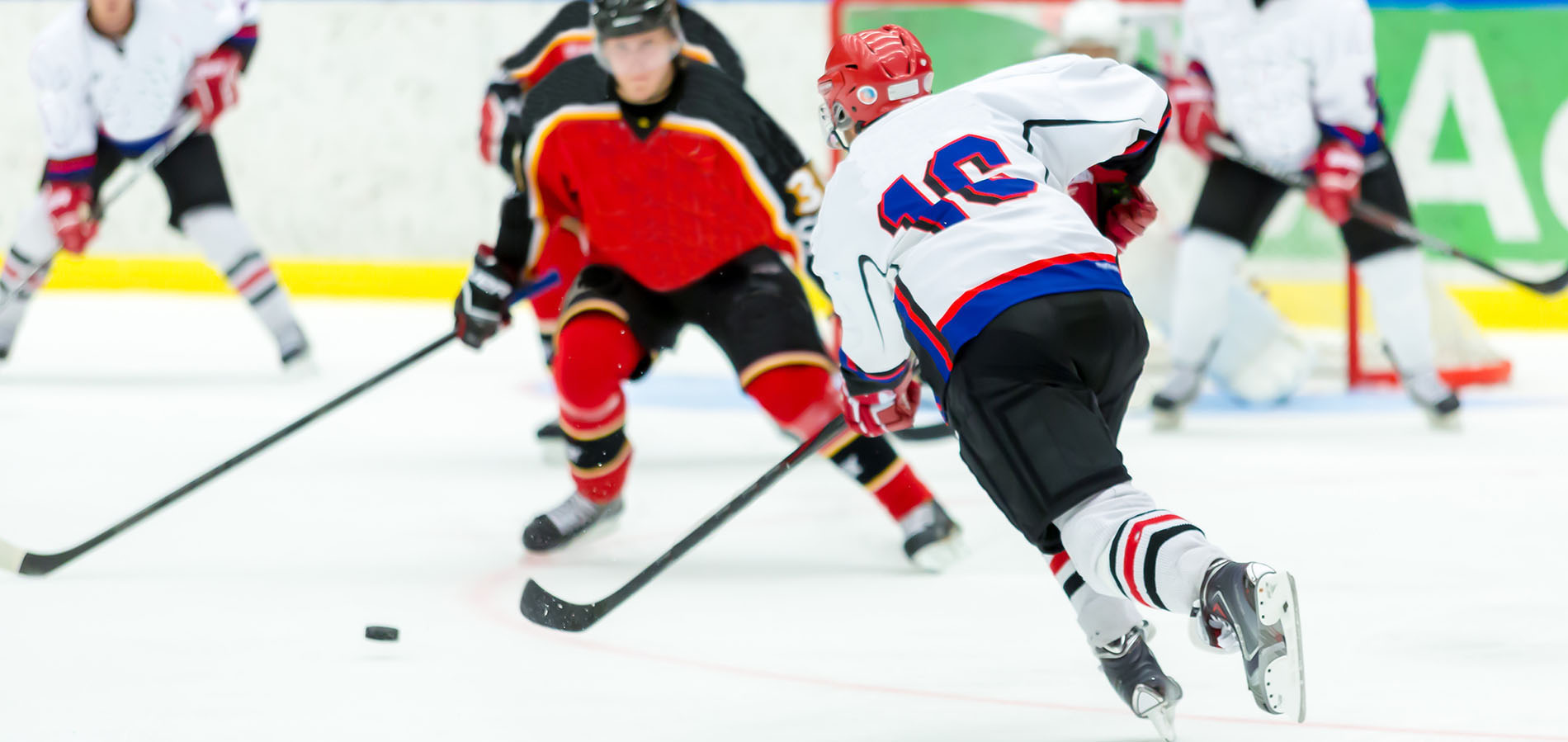Defensive Zone –
Center: Cover front of net up to the hash marks and help defense in the corners
Wings: Play on the tops of the circles more towards the middle of the ice, forcing opponent’s defense to the outside. Put light pressure or “front” opposing defensemen unless they cannot gain control of the puck, then go hard and play the body.
*Front: stand between defender and goal to prevent or block shot
Note 1* You do not have to force visiting players who are behind the net, in the corners, or at the boards on the blue line, these are low risk zones for goals and you should only attack if you are 100% sure that you will get the puck, otherwise front and take away passing lanes.
Note 2* In the defensive zone you should always have a 5 on 3 advantage from the tops of the circles down unless their defense steps up into the play. Many teams will not even use their defense in the offensive zone, which makes this even more true.
Note 3* Do not screen the goalie ever unless you are 100% sure that you will block the puck. NEVER front the shooter then MOVE when the shot is taken, this makes it very difficult for the goalie to read the shot.
Note 4* Do not tie yourself up with players in front of your own net. Simply clear them out of the way by pushing on the sides of their shoulders and hips which will spin them around and off balance. Make sure that you do not let them get their stick in a position to touch the puck. It is much easier to clear a player with one hand on the stick because you can use both arm separately and still have the ability to poke check.
Note 5* Do not get caught looking at the puck and chasing it around the zone because you will get caught out of position. Play the body then retrieve the puck.
Offensive Zone –
- Get puck into zone while maintaining as much speed as possible, even if you have to dump it in.
- Dump puck on the net whenever possible because every shot on net has a chance to go in, and most goalies cannot play the puck like Martin Brodeur.
- Take away time and space by forcing opposing players into a smaller area and outnumbering them.
- Make sure passing lanes to other players are cut off so that the player forechecking is not wasting his energy chasing someone who has the ability to pass it off easily.
- Bad shots are better than bad passes, so take as many shots as possible and always have someone in front of the net for rebounds
- Play the body. Forcing a team hard in their defensive zone will cause them to panic and make mistakes.
Other Tips –
- Do not make fancy passes just inside the offensive zone blue line. This is where most turnovers occur. The same applies to defensive zone.
- On faceoffs, the center should let his players know where he plans on putting the puck and line up the wingers and D accordingly.
- Pass puck to open areas of the ice and skate to it. You do not need to pass tape-to-tape, in fact, sometimes that will actually slow the play down.
- A majority of goals are score on rebounds or within 25 feet of the net so protecting the front of the net is a must.

